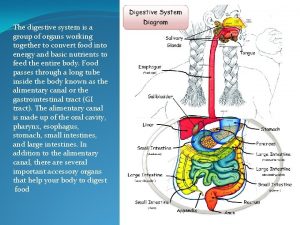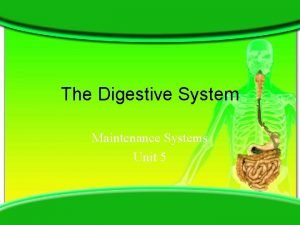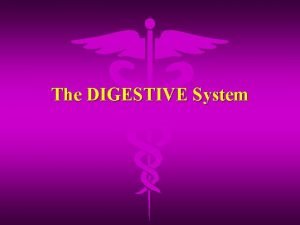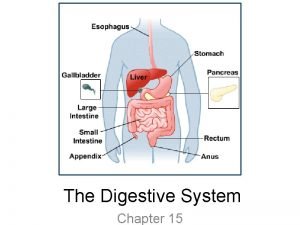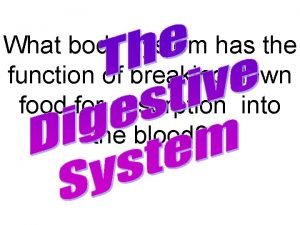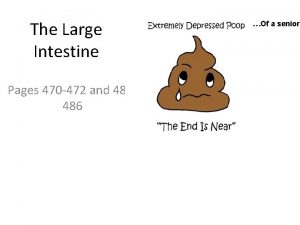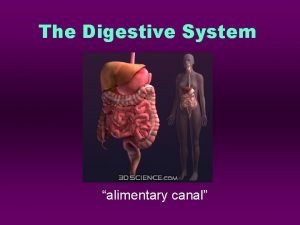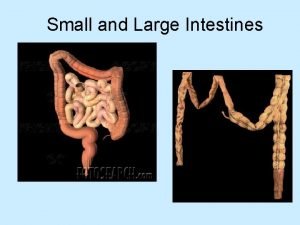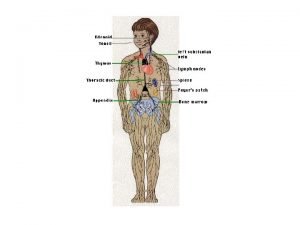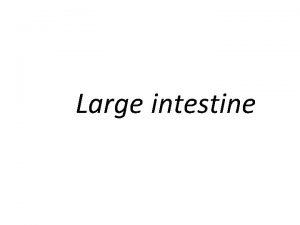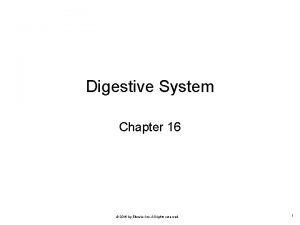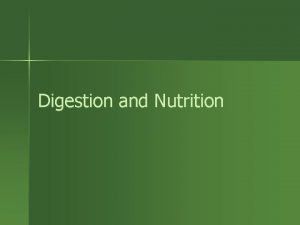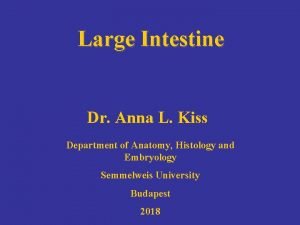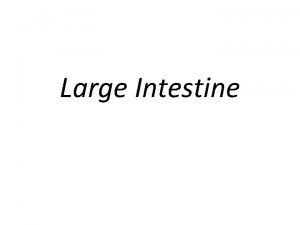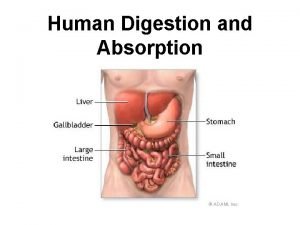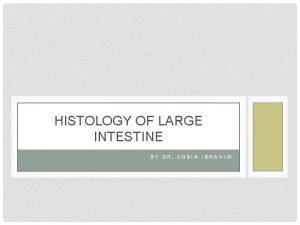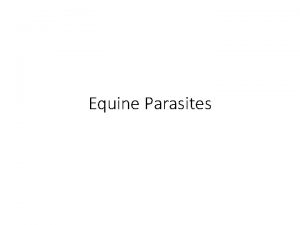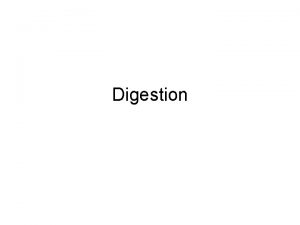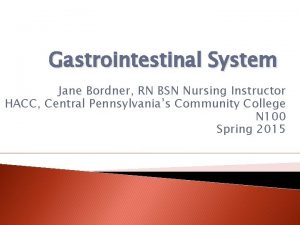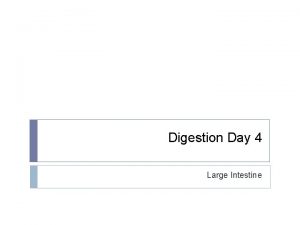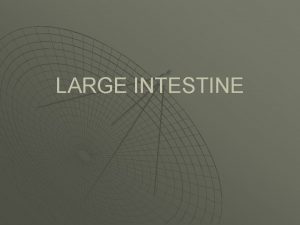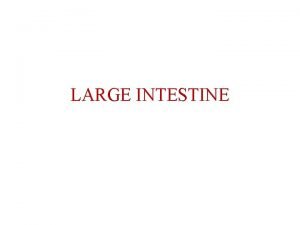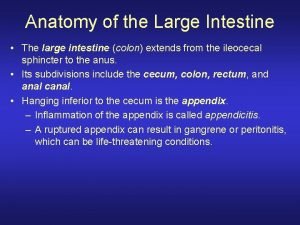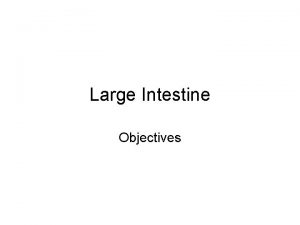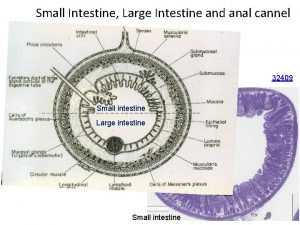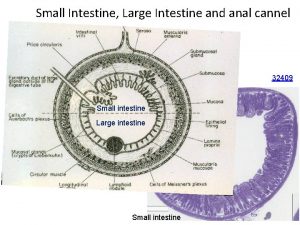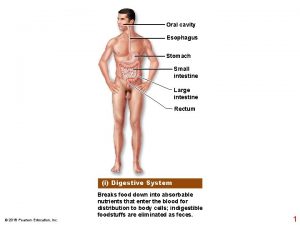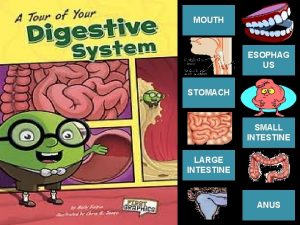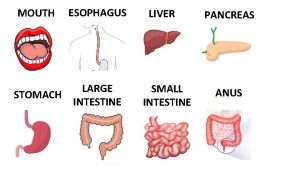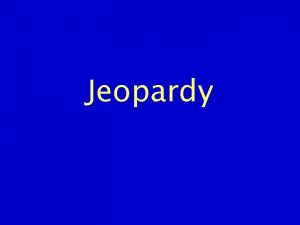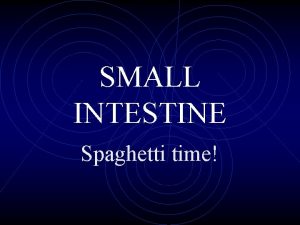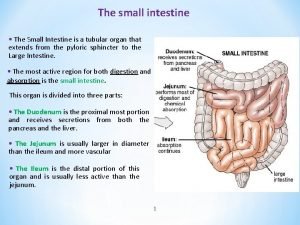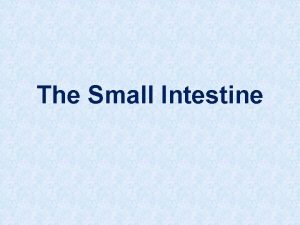Human Digestion Small Intestine and Large Intestine Small





















- Slides: 21

Human Digestion Small Intestine and Large Intestine

Small Intestine • More than 6 m in humans • The longest section of the alimentary canal. • Its name refers to the diameter which is smaller than the large intestine. • Most of the enzymatic hydrolysis and absorption of nutrients occurs in the small intestine.

• The first 25 cm of the small intestine is called the duodenum. • In the duodenum, chyme from the stomach is mixed with digestive juices from the pancreas, the liver and the gallbladder. (accessory glands)

Duodenum

Pancreas • The pancreas produces enzymes and an alkaline solution rich in bicarbonate. • The bicarbonate acts as a buffer offsetting the acidity of the chyme from the stomach. • Enzymes include proteases like trypsin and aminopeptidase, pancreatic amylases, pancreatic nucleases and lipase.


Liver • Produces bile, a mixture of salts that act as detergents that break down fats. • Bile salts surround fat droplets aiding lipase to hydrolyze fat molecules into glycerol and fatty acids. • Bile is stored in the gallbladder until needed.


Small Intestine • Most digestion is completed in the duodenum. • Peristalsis moves the mixture of chyme and digestive juices along the small intestine. • The jejunum and the ileum areas in the small intestine that function in absorption of nutrients and water.

Small Intestine • To enter the body, nutrients must cross the lining of the digestive tract. • Most absorption takes place in the small intestine. • The surface area of the small intestines is 300 m 2.

Small Intestine

Small Intestine • Large circular folds in the lining make fingerlike projections called villi. • Each cell of a villus has many structures called microvilli. • Penetrating the core of each villus is a group of microscopic blood vessels called lacteal.

Absorption • Nutrients are absorbed across two layers of epithelial cells. – Epithelium of the villus – Epithelium of the lacteal

Absorption • Transport may be passive by diffusion or active by pumping against a gradient. – Passive - fructose moves by facilitated diffusion down its concentration gradient. – Active - amino acids, glucose, and vitamins are pumped across the epithelial cell membrane. Fats move out of the epithelial cells by exocytosis.

Absorption • Absorbed amino acids and sugars enter capillaries. • The nutrient rich blood from the small intestine is carried directly to the liver by the hepatic portal vein. • The liver regulates the nutrient content of blood.

Absorption • From the liver, blood travels to the heart, which pumps the blood and the nutrients it contains to all parts of the body.

Large Intestine • The small intestine leads into the large intestine. (colon) • There are three areas of the large intestine – Ascending – Transverse – Descending

Large Intestine Cecum & appendix Sigmoid Colon

• The colon finishes the reabsorption process of water. • Absorbs vitamin K and B • Hardens stool • Ferments undigested organic material

E. coli • Escherichia coli and other mostly harmless bacteria live on unabsorbed organic material in the large intestine. • Some of these bacteria produce vitamin B and vitamin K. • Feces contain cellulose, other undigested materials and bacteria

• Feces is stored in the rectum to be released.
 Esophagus stomach small intestine large intestine
Esophagus stomach small intestine large intestine Small intestine mechanical digestion
Small intestine mechanical digestion Small intestine mechanical digestion
Small intestine mechanical digestion Main function of intestine
Main function of intestine Mechanical and chemical digestion venn diagram
Mechanical and chemical digestion venn diagram Haustrum
Haustrum What does the inside of a human stomach look like
What does the inside of a human stomach look like Parts of the large intestine
Parts of the large intestine Lymphoid tissue in colon
Lymphoid tissue in colon Enteroendocrine cells
Enteroendocrine cells Relations of ascending colon
Relations of ascending colon Labelled diagram of a tooth
Labelled diagram of a tooth Characteristics of water soluble vitamins
Characteristics of water soluble vitamins Plica ileocolica
Plica ileocolica Sacculations
Sacculations Orange juice ph
Orange juice ph Muscularis of large intestine
Muscularis of large intestine Strongylus vulgaris
Strongylus vulgaris Digestive system enzymes chart
Digestive system enzymes chart Bile and pancreatic juices are secreted in the
Bile and pancreatic juices are secreted in the Part of large intestine
Part of large intestine Large intestine function in digestive system
Large intestine function in digestive system
